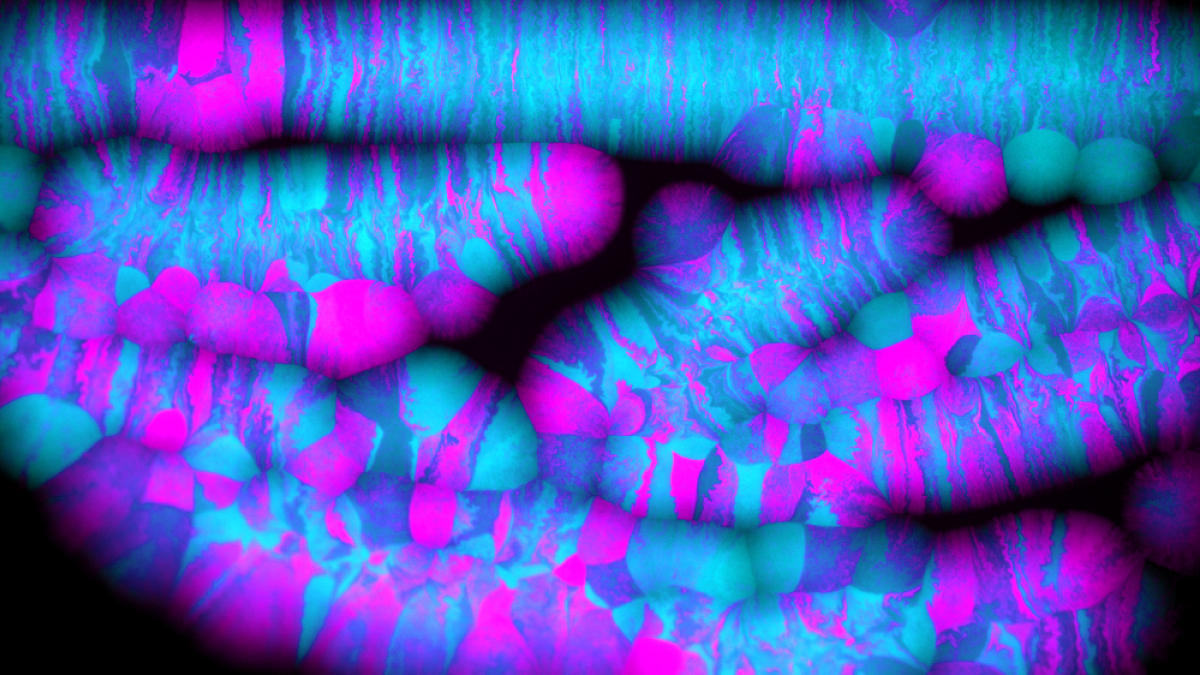A trio of UO researchers with an innovative idea for genetic switches to study microbial ecosystems is one of three winning teams in the inaugural Kavli Microbiome Ideas Challenge that supports the development of novel tools and methods in microbiome research.
The UO team of ecologist and evolutionary biologist Brendan Bohannan, microbiologist Karen Guillemin and biophysicist Raghuveer Parthasarathy won out over nearly 100 applications from 17 countries. The Kavli award supports high-risk, interdisciplinary research that may not normally receive traditional funding. The UO team’s research grant totals $340,000.
In recent years, Parthasarathy said, an enormous amount of research interest has focused on the microbiome — the collection of microbes that are associated with humans and other animals — and yet researchers still know very little about what goes on within these communities.
“How are these ecosystems organized in the environment of the gut?” Parthasarathy said. “What are these bacteria actually doing? Are they swimming around, working together, or fighting with other bacteria?”
The research team plans to develop tools that allow bacteria to report on their activities, such as a probe that lights up once a gene that enables motion is activated or when a bacterium is experiencing stress. The research builds on existing projects that all three researchers have been working on, including three-dimensional microscopy that examines the insides of zebrafish.
Some research in this realm has been done on domesticated bacteria and other common microbes, but, Parthasarathy said, one of the distinguishing characteristics of the team’s new project is that it will examine actual intestinal bacterial species in their natural environment.
The complexities are great enough that an interdisciplinary team is needed in order to discover what’s going on inside these communities, he said. Guillemin contributes her bacterial molecular biology expertise to make the tools, Parthasarathy supplies the expertise needed to image and extract quantitative information, and Bohannan provides the ecological principles needed to understand a system that is extremely fluid.
“It is this combination of molecular biology, biophysics, imaging and ecology that is particularly exciting, and I firmly believe it’s only through a combination like that that we’re going to actually learn something insightful about these systems,” Parthasarathy said.
Researchers will use zebrafish because of the ability to manipulate and image the fish’s associated microbes. Parthasarathy credited the recent $10 million gift from Tim and Mary Boyle that endowed the infrastructure for zebrafish research on campus as being a key contributing factor in the project. The research could one day provide new insights into the treatment of diseases such as diabetes and Parkinson’s disease, which are associated with alterations in gut microbial communities.
The project has its roots in the UO’s META Center, which does groundbreaking research on how animals, including humans, and their associated microbes function as systems. It is one of only a handful of National Institutes of Health-sponsored biomedical centers focused on taking an integrated approach that uses physical, computational and experimental sciences to understand complex biological systems.
“This is a project that grew out of the META Center's intellectual environment that fosters curiosity and creativity,” Guillemin said. “What is so exciting about this grant is that we’ve thought so deeply about our systems that we know what would be valuable and useful tools to build that will enhance not just our own research but research in many other host-microbe systems.”
Another outgrowth of working together, Bohannan said, is the team’s researchers have become more proficient working in other disciplines.
“I've become much more of an animal biologist than I've ever been before, Raghu has become a creative and proficient molecular biologist — and my favorite ecological modeler — and Karen continues to surprise me with the depth of her insights into ecology and evolution,” Bohannan said. “This kind of truly interdisciplinary perspective would not have developed without the META Center. I also don't think it would have happened without the unique environment that UO provides.”
The Kavli organization is a private foundation dedicated to the goals of advancing science for the benefit of humanity and promoting increased public understanding and support for scientists and their work.
—By Lewis Taylor, University Communications


